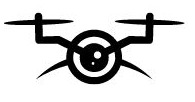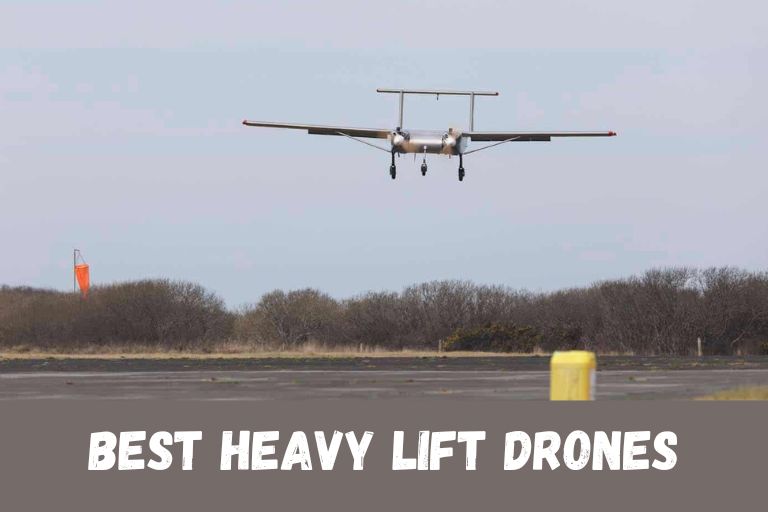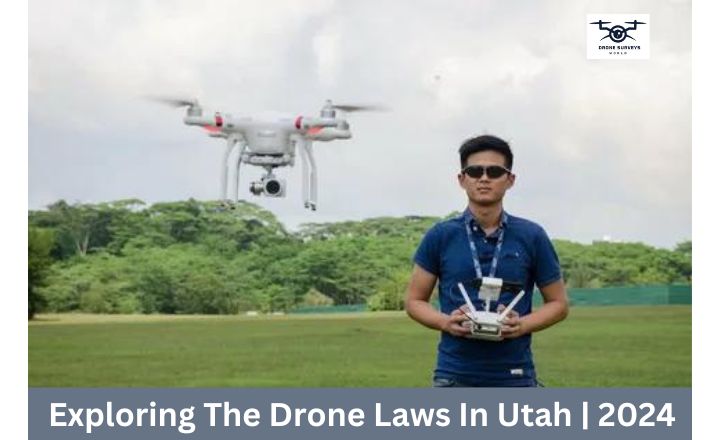Learn to Fly Drones: A Complete Guide for Beginners
Drones have revolutionized the way we capture the world from above, offering a unique perspective that was once only accessible to those with access to helicopters or planes. Whether you’re interested in drone photography, videography, or just want to experience the thrill of flying, learning to fly drones is an exciting journey. This guide will take you through everything you need to know to master the art of drone flying safely and effectively.
Introduction to Drones
Drones, or unmanned aerial vehicles (UAVs), are aircraft without a human pilot aboard. Originally developed for military use, drones have become popular among civilians for recreational and professional purposes. These versatile flying machines come in various shapes and sizes, from small quadcopters for beginners to larger, more advanced models used in industries like agriculture, surveying, and filmmaking.
The history of drones dates back to the early 20th century, with significant advancements during World War I and II. However, it wasn’t until the late 2000s that drones became widely available to the public. Today, drones are equipped with advanced features like GPS, cameras, and autonomous flight modes, making them accessible even to those with no prior flying experience.
Understanding Drone Components
To fly a drone successfully, it’s essential to understand its key components. The main parts of a drone include:
- Drone Body: The central structure that houses all other components.
- Propellers: These provide the lift and thrust needed to fly.
- Motors: Responsible for spinning the propellers.
- Batteries: Power the drone, with flight time dependent on battery capacity.
- Controllers: Used to control the drone’s movement and flight.
Each component plays a crucial role in the drone’s functionality, and understanding how they work together will help you become a better pilot.
Choosing the Right Drone
Selecting the right drone is the first step in your journey. Beginners should opt for drones that are easy to fly, durable, and have features like automatic stabilization and return-to-home functions. Some of the best drones for beginners include:
- DJI Mini 2: Compact, lightweight, and user-friendly.
- Holy Stone HS720: Affordable with advanced features.
- Ryze Tello: Ideal for learning with a built-in camera.
Professional drones, on the other hand, offer more advanced features like higher-resolution cameras, longer flight times, and enhanced stability. The choice between recreational and commercial drones depends on your specific needs and budget.
Safety Measures for Flying Drones
Safety is paramount when flying drones. Before taking off, ensure you conduct a thorough pre-flight check, which includes inspecting the drone for any damage, ensuring the battery is fully charged, and checking that the propellers are securely attached. Understanding no-fly zones is also critical; these areas include airports, military bases, and national parks where drone flight is restricted.
Always fly your drone in open spaces away from people and property, maintain visual line-of-sight with the drone at all times, and avoid flying in adverse weather conditions. These precautions will help you avoid accidents and ensure a safe flying experience.
Legal Regulations for Drone Flying
Flying a drone is not just about mastering the controls; it’s also about understanding the legalities involved. In the United States, the Federal Aviation Administration (FAA) regulates drone usage. Key regulations include:
- Registering your drone if it weighs more than 0.55 pounds.
- Flying at or below 400 feet.
- Keeping your drone within visual line-of-sight.
- Avoiding flying over people, moving vehicles, or restricted areas.
International drone laws vary, so it’s important to research and comply with local regulations when flying abroad. Additionally, be mindful of privacy considerations, particularly when flying in residential areas.

Basic Drone Controls
Learning to control your drone is the foundation of becoming a skilled pilot. The basic controls include:
- Throttle: Controls the drone’s altitude.
- Yaw: Rotates the drone left or right.
- Pitch: Tilts the drone forward or backward.
- Roll: Rolls the drone sideways.
Understanding these controls and practicing with them in an open area will help you gain confidence and improve your flying skills. Start with small, controlled movements before attempting more advanced maneuvers.
Drone Flight Modes
Modern drones come with various flight modes that cater to different skill levels and needs. Some common flight modes include:
- Beginner Mode: Limits speed and altitude, perfect for new pilots.
- Sport Mode: Increases speed and agility for more experienced users.
- GPS Mode: Stabilizes the drone using GPS, ideal for aerial photography.
- Manual Mode: Gives the pilot full control, suitable for advanced users.
Experimenting with these modes will help you understand your drone’s capabilities and find the best settings for your flying style.
How to Calibrate Your Drone
Calibrating your drone is essential for accurate flight. Calibration involves setting up your drone’s compass, accelerometer, and GPS to ensure it flies smoothly and accurately. Follow these steps to calibrate your drone:
- Place the drone on a flat surface.
- Follow the manufacturer’s instructions to initiate calibration.
- Rotate the drone as directed by the instructions.
- Wait for the calibration to complete.
If you encounter issues during calibration, refer to your drone’s manual for troubleshooting tips. Regular calibration is recommended, especially if you travel to new locations.
Understanding Weather Conditions
Weather can significantly impact your drone flying experience. Ideal flying conditions include clear skies, low wind speeds, and moderate temperatures. Windy conditions can make it difficult to control your drone, while rain can damage the electronics. Always check the weather forecast before flying and avoid flying in extreme conditions like heavy rain, snow, or high winds.
Flying in different weather conditions requires skill and experience. For example, flying in cold weather can reduce battery life, so be prepared for shorter flights. Similarly, flying in hot weather can cause the drone to overheat, so monitor your drone’s temperature during flights.
First Flight: What to Expect
Your first flight is an exciting experience, but it can also be a bit nerve-wracking. Start by choosing an open, obstacle-free area for your flight. Begin by practicing basic maneuvers like taking off, hovering, and landing. Gradually progress to more complex movements as you gain confidence.
During your first flight, keep the drone at a low altitude and within a short distance to avoid losing control. It’s also a good idea to have a spotter with you who can help keep an eye on the drone and provide assistance if needed.
Common Beginner Mistakes and How to Avoid Them
As a beginner, it’s natural to make mistakes. However, being aware of common pitfalls can help you avoid them. Some frequent beginner mistakes include:
- Crashing: Often caused by flying too fast or too close to obstacles. Always fly at a moderate speed and maintain a safe distance from objects.
- Losing Control: This can happen if you panic or over-correct during flight. Practice slow and steady movements to maintain control.
- Flying Out of Range: Drones have a limited range, so always keep your drone within visual line-of-sight to prevent signal loss.
- Battery Mismanagement: Running out of battery mid-flight can lead to crashes. Monitor your battery levels and return your drone before the battery runs low.
By understanding these common mistakes, you can take steps to avoid them and enjoy a smoother flying experience.
Improving Your Flying Skills
As you become more comfortable with basic maneuvers, you can start working on improving your flying skills. Try practicing in different environments, such as open fields, forests, or urban areas. Each environment presents unique challenges that can help you become a more versatile pilot.
Joining a drone flying community is another great way to improve your skills. These communities offer opportunities to learn from experienced pilots, participate in group flights, and share tips and tricks.
Photography and Videography with Drones
One of the most exciting aspects of drone flying is the ability to capture stunning aerial photographs and videos. To get the best results, follow these tips:
- Plan Your Shots: Consider the angle, lighting, and composition before taking off.
- Use the Right Settings: Adjust your camera settings for optimal exposure, focus, and resolution.
- Smooth Movements: Fly slowly and steadily to capture smooth, cinematic footage.
Practicing these techniques will help you produce high-quality aerial images and videos that showcase your drone’s capabilities.
Maintenance and Care for Your Drone
Regular maintenance is key to keeping your drone in top condition. After each flight, inspect your drone for any signs of wear or damage. Clean the propellers and motors to remove dirt and debris, and ensure that the batteries are stored properly.
Updating your drone’s firmware is also important, as manufacturers often release updates that improve performance and fix bugs. By taking good care of your drone, you can extend its lifespan and ensure it continues to perform well.
Troubleshooting Common Drone Issues
Even with regular maintenance, you may encounter issues with your drone. Some common problems include:
- Signal Loss: Often caused by flying out of range or interference from other devices. If you lose signal, try moving to a different location or flying at a lower altitude.
- Battery Issues: If your drone’s battery drains quickly, check for any damage and ensure it’s fully charged before each flight.
- Motor Problems: If a motor fails to start, it could be due to debris or a faulty connection. Clean the motors and check the wiring.
- Software Glitches: Updating the firmware can resolve many software-related issues.
By knowing how to troubleshoot these problems, you can quickly resolve issues and get back to flying.
Drone Accessories You Might Need
To enhance your flying experience, consider investing in some useful drone accessories. These can include:
- Extra Batteries: For longer flight times.
- Propeller Guards: To protect your drone from damage.
- Carrying Cases: For safe transportation.
- FPV Goggles: For an immersive first-person view.
These accessories can make your drone flying more enjoyable and convenient, especially for extended flights or challenging environments.
Flying Drones in Different Environments
Each flying environment presents its own challenges and requires different skills. For example:
- Flying Over Water: Be cautious of reflections that can interfere with your drone’s sensors.
- Urban Flying: Avoid obstacles like buildings and power lines, and be mindful of privacy concerns.
- Forests and Mountains: Watch out for trees, branches, and changes in elevation.
- Indoor Flying: Requires precise control due to limited space.
Practicing in different environments will help you become a more adaptable and confident pilot.
Using Drones for Different Purposes
Drones are used for a variety of purposes beyond recreational flying. Some applications include:
- Agriculture: Monitoring crops and livestock.
- Surveying: Mapping and land analysis.
- Entertainment: Capturing aerial footage for movies and events.
Understanding the different uses of drones can open up new opportunities for you, whether as a hobby or a professional pursuit.
Ethical Considerations in Drone Flying
With the increased use of drones comes the need for ethical flying practices. It’s important to respect others’ privacy by avoiding flying over private property without permission. Additionally, drones can disturb wildlife, so be mindful when flying near nature reserves or during nesting seasons.
By following ethical guidelines, you can enjoy your drone flying hobby without infringing on others’ rights or harming the environment.
Drone Racing: An Exciting Hobby
Drone racing is a fast-growing sport that combines speed, agility, and skill. In drone racing, pilots navigate their drones through a course filled with obstacles at high speeds. To get started, you’ll need a racing drone, a controller, and FPV goggles.
The best drones for racing are lightweight, fast, and highly maneuverable. Practicing on different courses will help you improve your reaction times and control, making you a competitive racer.
Innovations in Drone Technology
The drone industry is constantly evolving, with new innovations emerging regularly. Some exciting developments include:
- AI and Drones: Artificial intelligence is being integrated into drones for tasks like object recognition and autonomous flight.
- Autonomous Drones: These drones can navigate and perform tasks without human intervention.
- Future Trends: Expect to see drones with improved battery life, enhanced safety features, and even more advanced cameras.
Staying informed about these innovations will keep you at the forefront of drone technology.
Tips for Flying Drones at Night
Night flying offers a unique experience but requires extra precautions. To fly safely at night:
- Use Lights: Equip your drone with LED lights to improve visibility.
- Check Legal Requirements: Some areas have specific regulations for night flying.
- Practice Night Flying Techniques: Fly slowly and keep your drone close to avoid losing it in the dark.
With the right preparations, you can enjoy the thrill of night flying while staying safe and compliant with regulations.
Creating a Drone Flight Plan
Planning your drone flights can save time and help you avoid potential issues. A good flight plan includes:
- Objective: What do you want to achieve with this flight?
- Route: The path you plan to take.
- Safety Checks: Ensuring the area is safe for flying and free from obstacles.
Tools like flight planning apps can assist in creating detailed and effective flight plans.
Getting Certified as a Drone Pilot
For those serious about drone flying, obtaining certification can be highly beneficial. Certification requirements vary by country, but generally include passing a written test and demonstrating flight proficiency.
Certified drone pilots have access to more flying opportunities, including commercial jobs, and gain credibility in the drone community.
Building Your Own Drone
For a hands-on challenge, consider building your own drone. This process involves selecting the right parts, assembling them, and tuning the drone for flight. Building a drone allows you to customize it to your specific needs and learn more about how drones work.
Once your drone is built, you’ll need to test and fine-tune it to ensure it flies properly. This process can be rewarding and gives you a deeper understanding of drone mechanics.
FAQs
What is the best drone for beginners?
The DJI Mini 2 is a popular choice for beginners due to its ease of use, lightweight design, and advanced features like GPS and return-to-home functionality.
How do I avoid crashing my drone?
To avoid crashes, practice flying in open areas away from obstacles, keep your drone within visual line-of-sight, and fly at a moderate speed.
Are there any legal restrictions on where I can fly my drone?
Yes, there are legal restrictions. In the U.S., the FAA prohibits flying near airports, over people, and above 400 feet. Always check local regulations before flying.
How can I improve my drone flying skills?
Practice is key to improving your drone flying skills. Start with basic maneuvers and gradually progress to more complex movements. Joining a drone flying community can also provide valuable learning opportunities.
What should I do if my drone loses signal?
If your drone loses signal, try to regain control by moving closer to the drone or lowering its altitude. If the signal is lost completely, most drones will automatically return to their home point.
Can I fly my drone at night?
Yes, but extra precautions are necessary. Ensure your drone is equipped with lights, and check local regulations for night flying. Practice flying at lower altitudes and in open areas to avoid obstacles.
Conclusion
Learning to fly drones is a thrilling experience that combines the joy of flying with the creativity of photography and videography. Whether you’re a beginner or looking to improve your skills, this guide provides the knowledge and tips you need to become a proficient drone pilot. As you continue your journey, remember to prioritize safety, stay informed about regulations, and always seek to improve your skills. With practice and patience, you’ll be soaring through the skies with confidence in no time.





